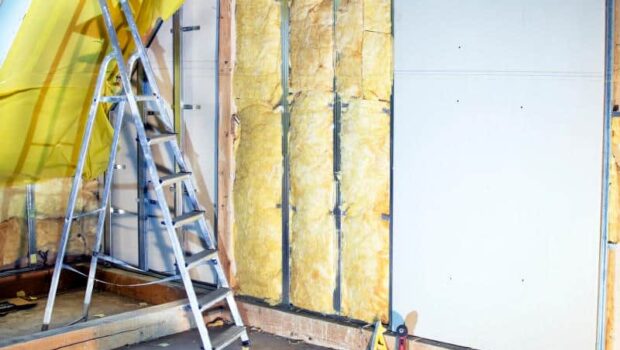Attic and roof insulation is crucial to keep the indoor temperature at an optimal level by averting unwanted heat loss or gain. Proper attic insulation can significantly increase the efficacy of the cooling or heating system of the home. In old attics that have no inbuilt insulated cavities, fibrous substances like cellulose or glass wool are blown into the hollow space filling the entire area. In finished wall cavities in the attic, loose, filled materials consisting of little particles of glass wool, rock wool, fiber, or foam is used to insulate the place. The little specks made from these substances can fill any space without upsetting structure or décor.
Cellulose insulation
Recycled paper, chiefly newspaper, is used to manufacture cellulose insulation, and a major portion of the substance is recycled paper. Fiberglass or glass wool insulation is made from fibers of glass set into a surface similar to wool using adhesive. In stone wool r rock wool, natural minerals like dolomite or basalt are used in insulation; these minerals are abundant on earth. Other than lose-filled insulation, wet spray cellulose insulation is also used where the moisture content binds the small cellulose particles. The wet cellulose particles align inside the open wall cavities.
Spray foam insulation
A spray gun is used for spray foam insulation. The foam is spurt under floors, concrete slabs, attic façade, and walls to inhibit heat transfer. Spray foam gel inside the smallest cavities and act as an excellent air blockade. This system is more effective than lose-filled insulation as it infiltrates and blocks any air pockets. If you use batts or blankets for insulation, some air pockets can remain open. Spray foam insulation is more expensive than other methods of insulation but more effective and durable. But cementitious foam generates toxic gas when burnt.
Closed and open cell foam
Two types of spray foam insulation are used; closed and open cell foam. The former provides better insulation as the high-density cells are bombarded with gas growing the foam to congest the space entirely. The powerful foam reinforces the structure giving better insulation. In open-cell insulation, the foam takes a spongy shape and is less dense than closed-cell foam. Nevertheless, open cell insulation works twice better as a sound barrier and is porous in nature, permitting the structural wood to breathe. In general, spray foam insulation is made from polyurethane, but the cementitious foam is fire-resistant and does not inflate like polyurethane or Phenolic foam.
Perfect removal technique
Hire professionals to removal of attic insulation made from any substances. They deploy high capacity vacuum with an elongated hose that reaches up to the attic. The machine sucks up all debris and dust generated from lose filled insulation and accumulates in large filter bags. A damaged attic insulation removal is necessary because of rodent infestation, the presence of mold, or water damage. To remove old insulation, professional help is recommended because they know the characteristics of cellulose, fiberglass, or spray foam insulation and how to remove them. As they are proficient in insulation removal, the process is effectively and safely executed. Moreover, the technique takes care of hazardous substances like mold spores or asbestos common in old structures.





